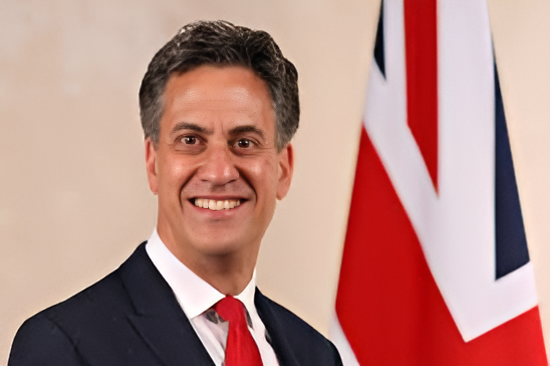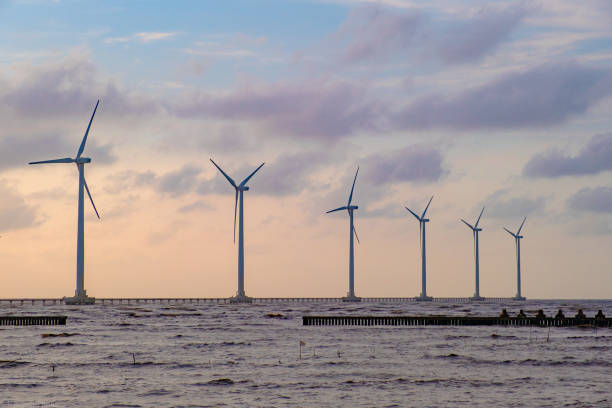UK Floating Wind Farms Lights Up Millions and Transform Coastline Economies
A huge project to harness the power of the wind 15 miles out to sea south of the coastlines of south Wales and south-west England is “breathtaking” and a “generational win” for clean energy and the UK economy, according to the government. The government has now named the companies that will build the farms, pledging a “green industrial revolution” that will feed enough renewable energy to the grid to supply power to up to four million homes — and to produce more than 5,300 in renewable energy jobs.
The project, led by joint venture partners Equinor and Gwynt Glas (EDF Renewable UK and ESB), was supported by the Crown Estate, and is set to see building some of the world’s biggest floating wind turbines – standing as tall as 300m and mounted on platforms the size of football pitches in deep waters some distance away from the coast.
They are to be built in Port Talbot and Bristol providing long term jobs, economic benefits and training in the regions. The UK government expects the windfarms to be operational in the early 2030s, with the added benefit of lower energy bills and energy independence to thousands of clean energy workers
“This is great news for future generations,” said sustainability consultant Andy Middleton. “Teenagers of today will be the workforce of tomorrow driving a UK green energy future that is clean, secure and affordable.
UK Floating Wind Lights Up 4M Homes
£400m Crown Estate investment Sparks Economic Boost

The Crown Estate, responsible for managing seabed rights and with more than £603m of holdings in land in wales, is putting £400m into boosting the UK’s offshore wind supply chain. The scheme fits with the UK’s push to ramp up net-zero actions to drive green jobs and green infrastructure.
Welsh Secretary Jo Stevens said the initiative was “hugely significant” while Energy Secretary Ed Miliband said it would be “transformative,” pointing to industrial renewal, energy independence and economic renewal in places like Port Talbot and Bristol.

“We’re backing thousands of jobs while ensuring everyone can rely on clean, affordable energy at the flick of a switch for decades to come,” said Miliband.
Youth & Inclusion of UK Floating Wind
At least 10% of new recruits are pledged to be drawn from the stagnant 19 to 24 NEET market. This guarantees the renewal that the next generations are involved in the energy transition and can find sustainable and skilled careers.
The Welsh Government, meanwhile, has promised to contract with developers directly in an effort to ensure the maximum number of jobs for local people.

“We’ll be getting on the phone to these companies to get jobs into Wales,” the first minister, Eluned Morgan, said.
Voices of Concern and Opportunity
The move has been welcomed by many, but some Welsh politicians raised concerns over the redistribution of profit. Plaid Cymru’s energy spokesperson Llinos Medi MP criticised that money would be going to Whitehall rather than being retained in Wales after making use of Welsh natural resources.
Even so, the scale of that opportunity is difficult to dismiss.

“This is more than simply an energy project — it represents a major turning point for the U.K.’s clean energy economy,” said Rebecca Williams, the director of the Crown Estate portfolio in Wales.
With UK floating wind farms in the pipeline, supported by billions of pounds of investment and thousands of jobs, the UK is cementing its position as a world leader in offshore renewable energy. And as construction accelerates and turbines are assembled in Port Talbot and Bristol, this clean energy surge holds the potential to power homes, train future generations and transform regional economies — all while driving the U.K. toward a net-zero future.
FAQ: UK Floating Wind Farms
What is a floating wind farm?
A floating wind farm is a wind farm with turbines installed on floating platforms instead of fixed substations embedded on the seafloor. Rather than stationary, bottom-fixed turbines, floating wind farms can be placed in deeper waters where wind is stronger and more consistent.
Why is the UK invest in floating wind farms?
The UK has fantastic offshore wind potential globally, especially in deeper water. The UK investing in floating wind technology enables it to:
Increase renewable generation of electricity
Power millions of homes
Help net-zero missions objectives
Produce tens of thousands of green jobs in coastal communities
Where are the UK floating wind farms being built?
New floating windfarms are planned for the coasts of south Wales and south-west England, and Port Talbot and Bristol are earmarked for turbine assembly and supply chain hubs.
Who are the UK’s floating wind leaders?
The UK’s key floating wind projects are being driven by:
Equinor (a dominant global offshore wind company)
EDF Renewables UK and ESB JV Gwynt Glas
The Crown Estate Offshore wind investment £400m in UK offshore wind supply chain
How many households will floating wind farms supply in the UK?
The proposed floating wind farms, which are expected to be operational by the early 2030s, could produce clean energy to power more than 4 million homes in the UK.
What economic value will these projects add?
Floating wind is expected to:
Generate more than 5,300 renewable energy jobs Wales
Inject a £1.4 billion benefit to the UK economy
Boost local jobs, particularly in Wales and the south-west of England
How do floating wind farms differ from fixed-bottom offshore wind farms?
Floating windmills can be placed in depths of water down to 60+ meters whereas fixed-bottom windmills need shallow shoreline seas. This opens up new frontiers for development, notably in the Celtic Sea.
How does this help young workers and local communities?
Developers have pledged to take on a minimum 10 per cent of NEET workers aged 19-24. That supports long-term clean energy careers and makes sure local talent profits right from the green shift.
When will the UK floating windfarms be up and running?
The UK’s first commercial floating wind farms are anticipated to be operational by the early 2030s, with early stage development and investment in the supply chain already taking place.
